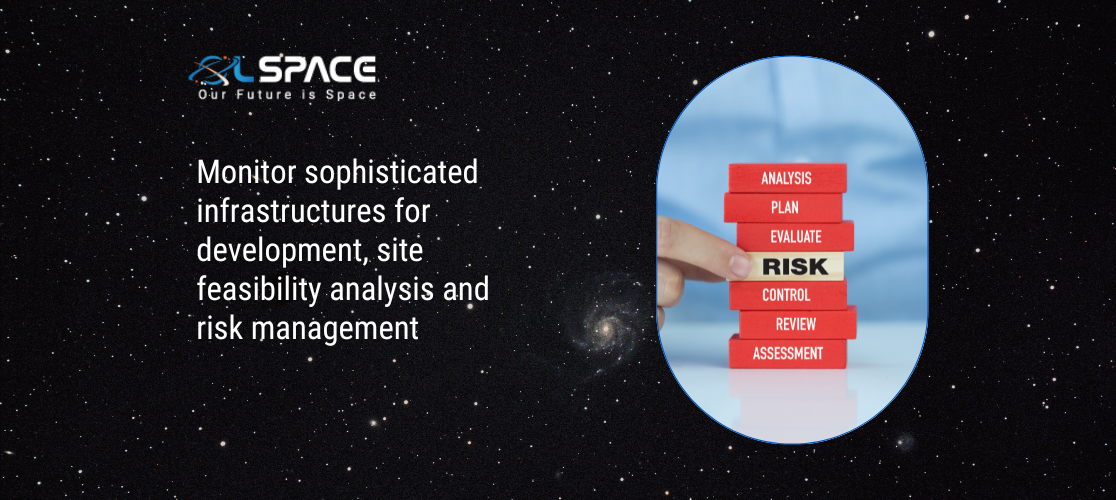06 October 2023
Monitor sophisticated infrastructures for development, site feasibility analysis and risk management

Monitoring sophisticated infrastructures for development, site feasibility analysis, and risk management is a crucial process for ensuring the successful implementation of infrastructure projects, especially in complex and high-stakes environments.
Let’s break down each aspect:
Development Monitoring:
Progress Tracking: Regularly monitor and track the progress of the infrastructure project to ensure it adheres to the defined development timeline.
Budget Management: Keep a close eye on project expenditures to ensure they stay within budget. Implement financial controls to prevent cost overruns.
Resource Allocation: Ensure that the necessary resources, including manpower, equipment, and materials, are allocated efficiently to support project development.
Site Feasibility Analysis:
Site Selection: Conduct thorough site assessments to identify suitable locations for the infrastructure project. Consider factors such as accessibility, environmental impact, and geological conditions.
Environmental Impact Assessment: Assess the potential environmental impact of the project and develop mitigation strategies to minimise adverse effects.
Technical Feasibility: Analyze the technical feasibility of the project, including engineering requirements and compatibility with existing infrastructure.
Market Analysis: Evaluate the market demand for the infrastructure and its potential economic benefits.
Risk Management:
Risk Identification: Identify and document potential risks associated with the project, including financial, environmental, regulatory, and operational risks.
Risk Assessment: Evaluate the impact and likelihood of each identified risk. Prioritise risks based on their potential consequences.
Risk Mitigation: Develop risk mitigation strategies and contingency plans to address identified risks. This may include insurance coverage, contractual agreements, and safety protocols.
Regular Review: Continuously monitor and reassess project risks throughout the development process. Update risk management strategies as necessary to address changing circumstances.
Technology and Tools:
Utilise advanced technology and tools such as Geographic Information Systems (GIS), Building Information Modeling (BIM), and data analytics to enhance site analysis, risk assessment, and project monitoring. Implement real-time monitoring systems and sensors to track construction progress, environmental factors, and safety conditions.
Compliance and Regulation:
Stay up-to-date with local, regional, and national regulations and ensure that the project complies with all necessary permits and approvals. Engage with regulatory authorities and stakeholders to address concerns and maintain compliance.
Stakeholder Engagement:
Engage with relevant stakeholders, including local communities, government agencies, and investors, to gather input, address concerns, and build support for the project.
Reporting and Documentation:
Maintain detailed records of all project activities, including site assessments, risk assessments, and financial transactions. Provide regular reports to project stakeholders to keep them informed of progress, challenges, and risk management efforts.
In summary, the successful development of sophisticated infrastructure projects requires meticulous monitoring, comprehensive site feasibility analysis, and robust risk management practices. By implementing these strategies and leveraging advanced technologies, infrastructure developers can enhance project outcomes, minimise risks, and ensure long-term success.
